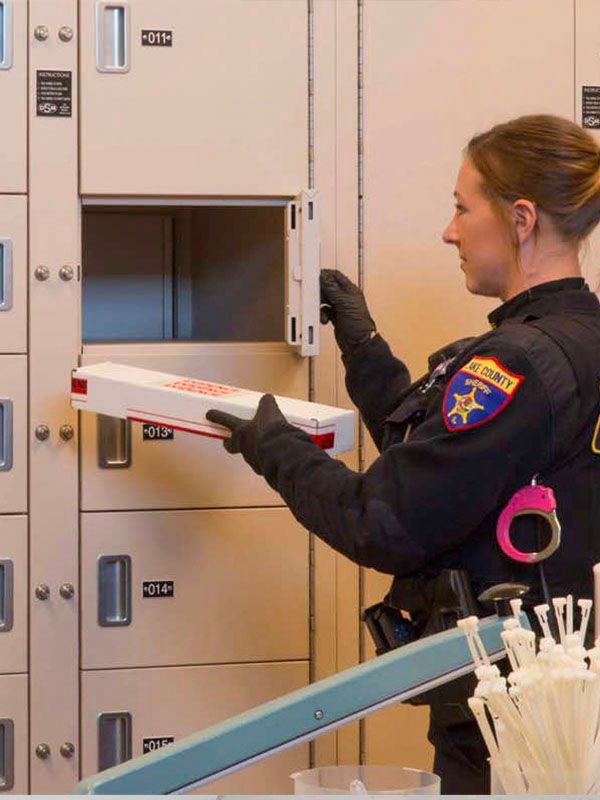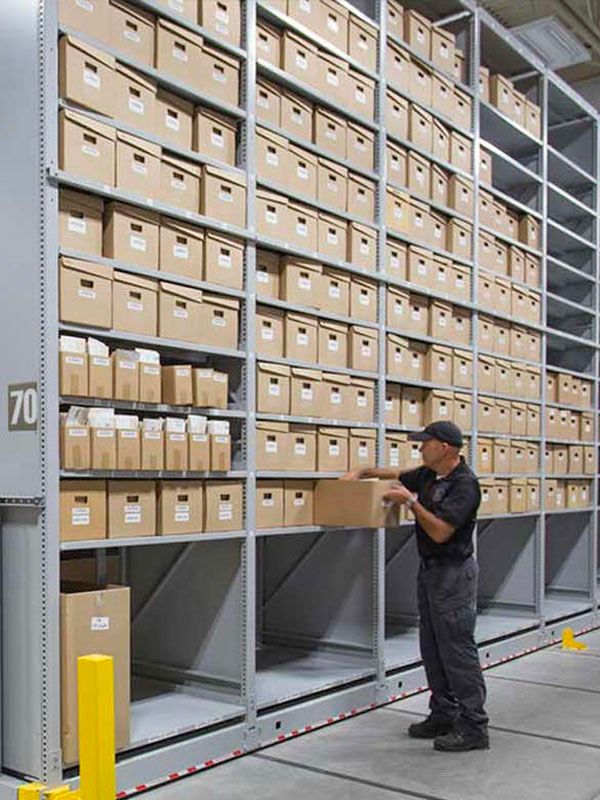Durham, North Carolina
Property and Evidence Storage Now Secure at Durham County Sheriff
Once called a “nightmare”, one North Carolina property room redeemed itself with the help of compact mobile shelving.
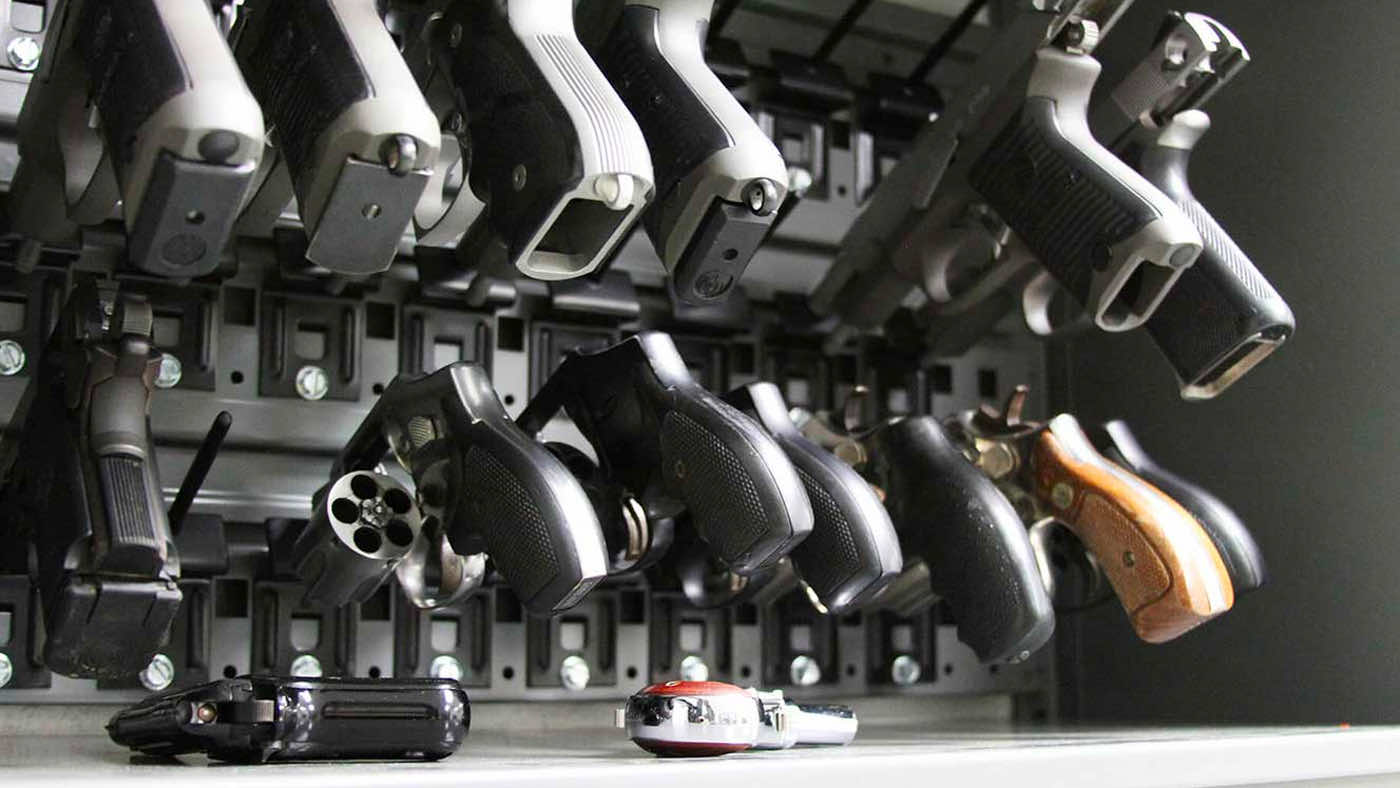
In the world of property and evidence storage, there’s always something that you’re not prepared for—even though time and experience tells you that on any given day, you’ll be bombarded with any number of evidence pieces in a variety of shapes or sizes. In Durham, North Carolina, that “something” happens to be computers—loads of desktop computers, to be exact—the product of a state law banning sweepstakes cafes, places where people play computer games that mimic Vegas-style slots. “We got rid of a bunch of them—but there are still a bunch left,” says John Bradford, Property Officer of the Durham County Sheriff’s Department.

Bradford needs a court order from a judge in order to purge the computers, which hasn’t come in the two and half years since the cafés were shut down throughout the state. Durham County’s new Justice Center opened in February 2013, shortly after the sweepstakes café ruling. In addition to the Sheriff’s Office, the building houses the District Attorney’s Office and 20 courtrooms. At approximately 320,000 square feet, the facility is a far cry from the cramped conditions of the previous building, but space was still a concern for Bradford and the department’s property and evidence storage. The computers were only part of the problem—the department had been dealing with the lack of storage—and its repercussions—for many years.
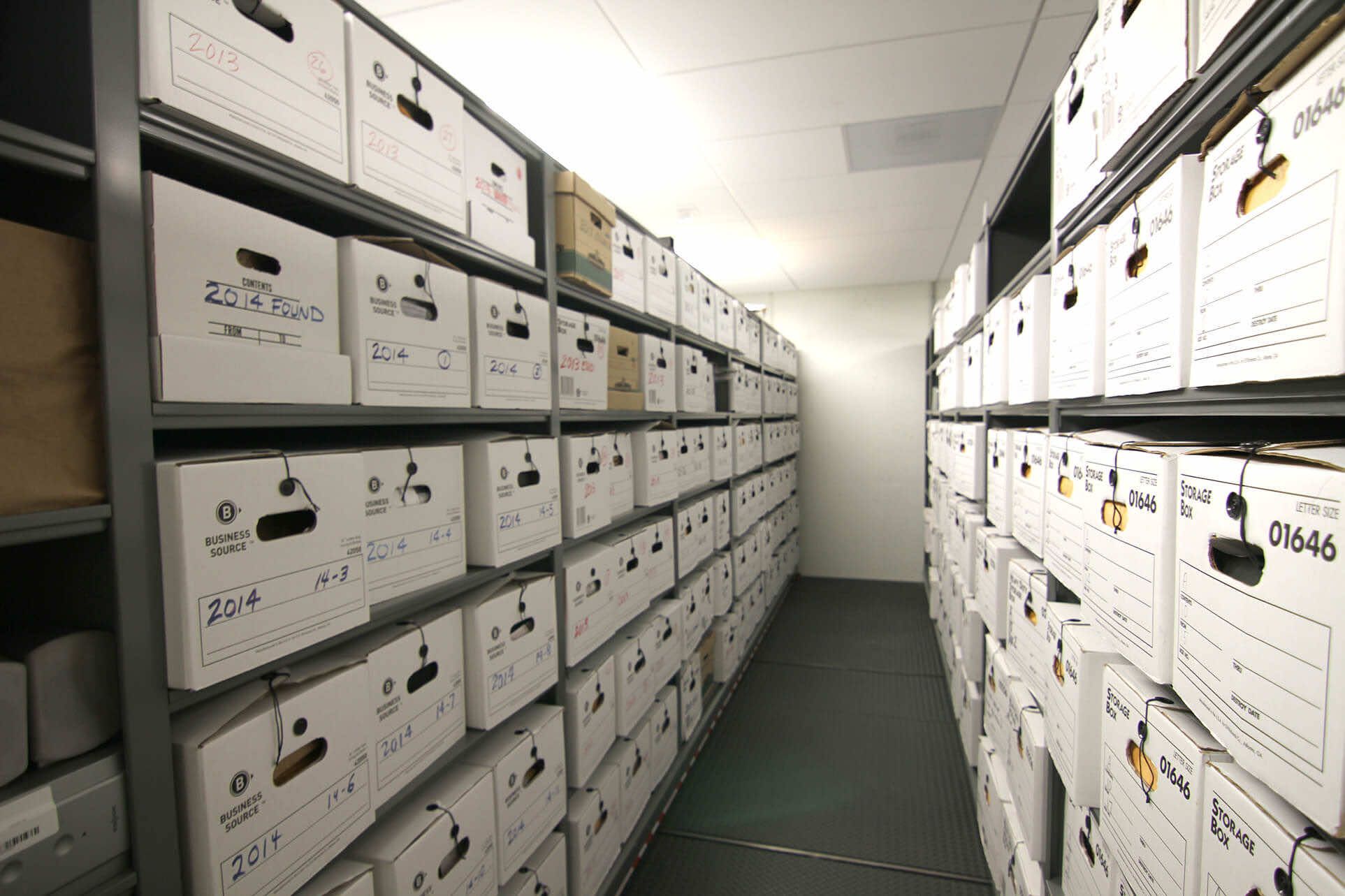
"The guys on patrol used to go in and ask for evidence, and the technicians would say, ‘I’ll get back to you’, and then the wouldn’t be able to find what the officers had asked for. Eventually, the cases would be dismissed due to a lack of evidence."
- John Bradford, Property Officer, Durham County Sheriff
“The Storage Situation was a Nightmare”
“The Sheriff hired me in 2004 to be the Crime Scene Investigator,” Bradford says, speaking about the previous building. “Shortly after, I was asked to be in charge of the Property and Evidence Unit—and the storage situation was a nightmare. It used to be if the Property Custodian wanted to get rid of a weapon, he’d just toss it in the room. All the guns were stacked on top of each other like Pixie Sticks. The evidence was piled—not in boxes, just piles on top of each other. It was like ”
The lack of space and organization was one thing—but Bradford says it also contributed to a fair share of dismissed cases. “The guys on patrol used to go in and ask for evidence, and the technicians would say, ‘I’ll get back to you’, and then the wouldn’t be able to find what the officers had asked for. Eventually, the cases would be dismissed due to a lack of evidence.”
Bradford wanted the property and evidence storage to be different under his watch—and he began by pulling everything in the room out and tracking them, one by one, on a spreadsheet. When the new building started to become a reality several years later, he knew it would give him and his team an opportunity to finally do things right. He remembered that the Records Department in the former Sheriff’s Office had utilized a compact mobile storage system for years, and as a result, was able to accommodate their current files and have the ability to plan for future growth. He wanted the same for his long-term evidence storage.

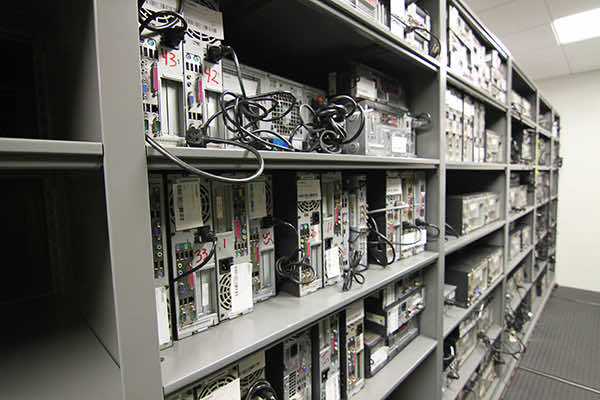
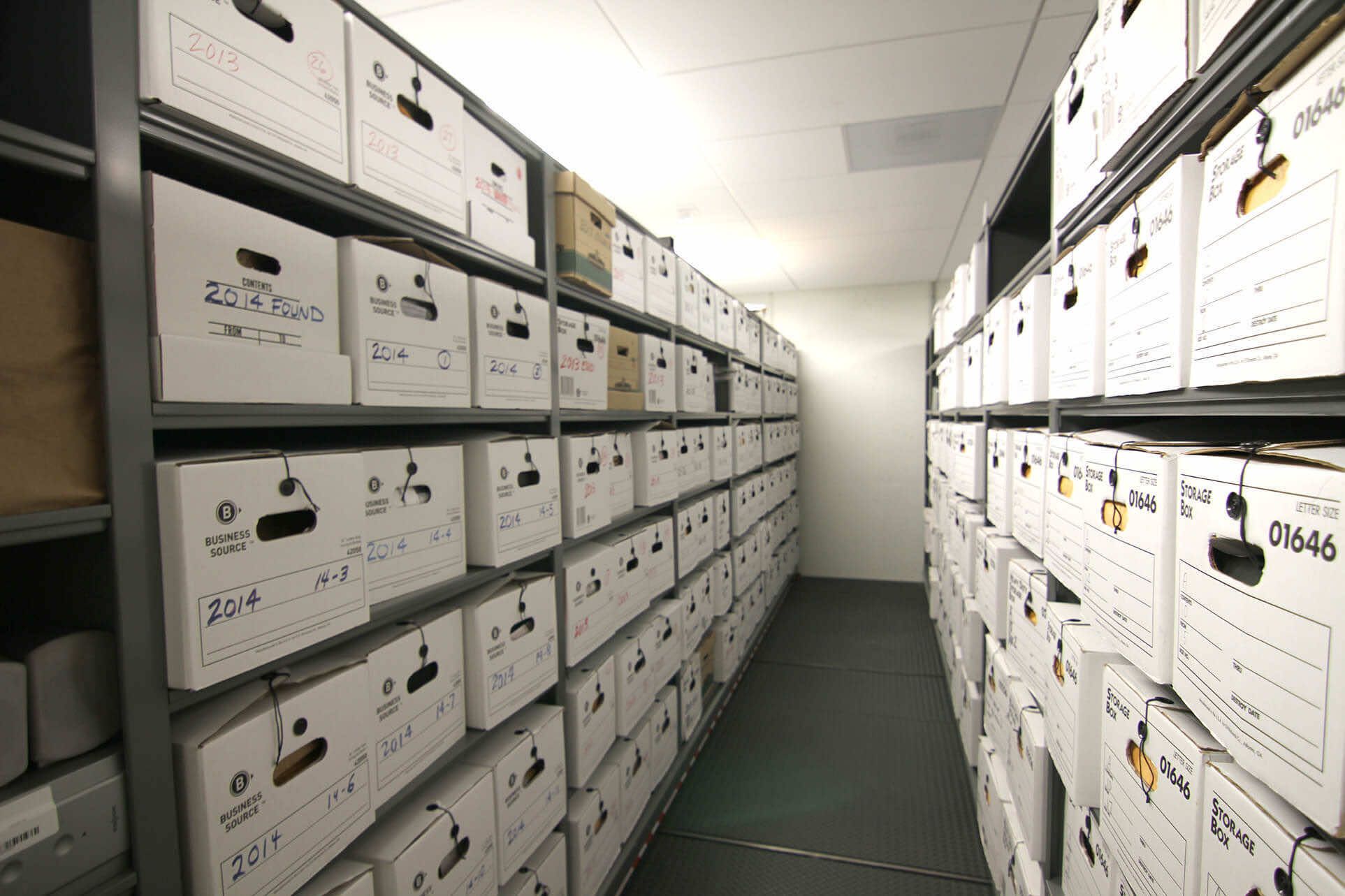

The Spacesaver-authorized distributor in North Carolina, had previously worked with a number of police departments and corrections facilities in the state—and knew exactly what Bradford was looking for. Working closely with him and his Property Room Manager, a powered compact mobile shelving unit was installed to organize the department’s 23,000 pieces of long-term evidence. The first carriage of the system is outfitted with widespan shelving to accommodate bulky evidence packaging materials, with the remainder of the system relying on sturdy four-post shelving to store everything from banker’s boxes full of items to larger pieces such as televisions and electronics. The last carriage is reserved for the evidence of Durham’s homicide cases.
The Spacesaver-authorized distributor in North Carolina, had previously worked with a number of police departments and corrections facilities in the state—and knew exactly what Bradford was looking for. Working closely with him and his Property Room Manager, a powered compact mobile shelving unit was installed to organize the department’s 23,000 pieces of long-term evidence. The first carriage of the system is outfitted with widespan shelving to accommodate bulky evidence packaging materials, with the remainder of the system relying on sturdy four-post shelving to store everything from banker’s boxes full of items to larger pieces such as televisions and electronics. The last carriage is reserved for the evidence of Durham’s homicide cases.
Being able to see and visually track the evidence has been revolutionary for the department all on its own—but in Bradford’s eyes, the real benefit of the system is how it’s helped his office plan for the future, specifically in the integration of an evidence tracking system. “We could have never got to the point where we are today—an electronic barcode system for evidence tracking—without this system,” he says. “We put stickers on every piece of evidence, and shelving makes it possible to have a place for every piece of evidence, too.”
Another feature of the system is a simple one, but Bradford and his staff are grateful for it. “I really appreciate that the system is powered,” he says. “If you have your hands full of evidence, which we often do—it saves time and effort.” In addition, a safety system was installed in the mobile storage unit. The system uses LED-infrared photo beams that shoot across the open aisle to protect people and materials left in the aisles. When the beam is interrupted, the shelves will not move. This security measure has proven to be instrumental when someone is already in the unit—or if there’s a box that just happens to be in the way.
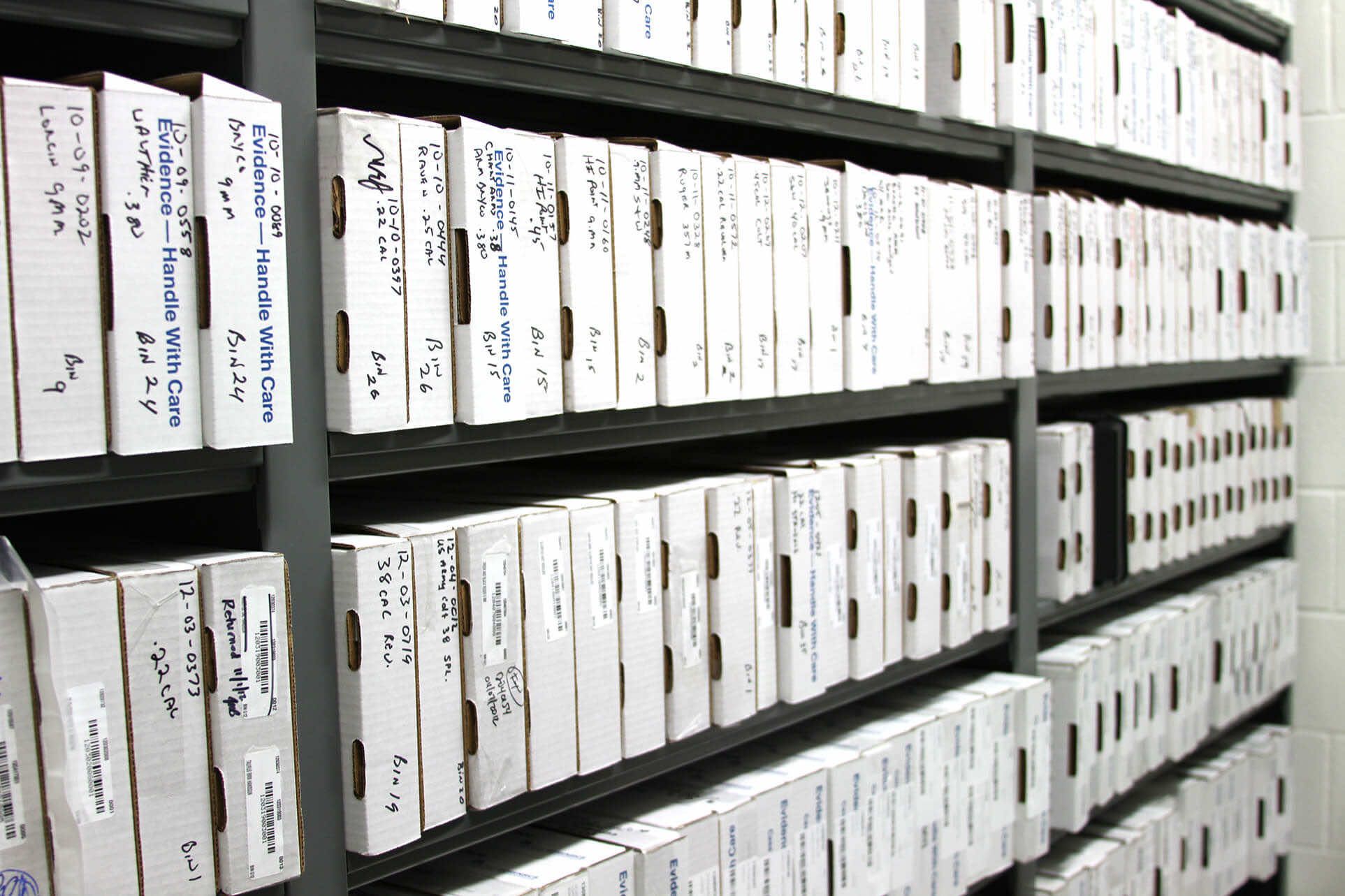
The current inventory of the Durham County Sheriff’s property and evidence storage room is 23,000. That equates to over 11 pieces of evidence for every person living in Durham County
Separate Weapons, Narcotics &; Off-Site Storage
Durham’s Sheriff’s Office also has two separate locked rooms adjacent to the space for the general long-term property and evidence storage for weapons and narcotics evidence, respectively. For the weapons room, static 4-post shelving units cover the perimeter, with the shelves sized to match the boxes Durham uses for pistol and long guns. “In terms of purging weapons, it’s difficult to know when we can get rid of them—so it was important for us to have a separate space to store them,” Bradford says. Next door to the weapons storage room, the narcotics room is outfitted with a smaller high-density mobile shelving system.
A 50’ x 60’ storage unit off the side of the Justice Center’s carport is outfitted with bulk shelving to keep large evidentiary items such as air conditioners and other electronics, as well as a 4-post shelving unit with perforated doors for additional supply.
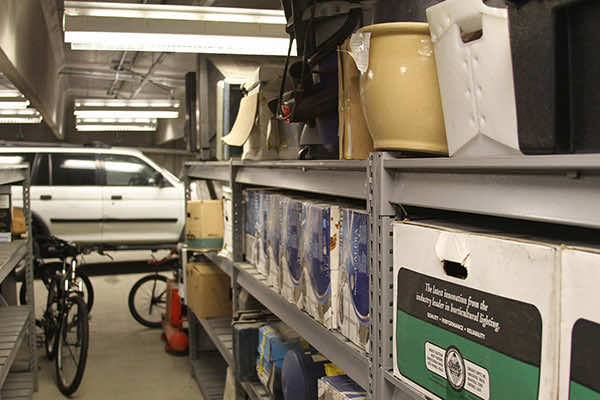
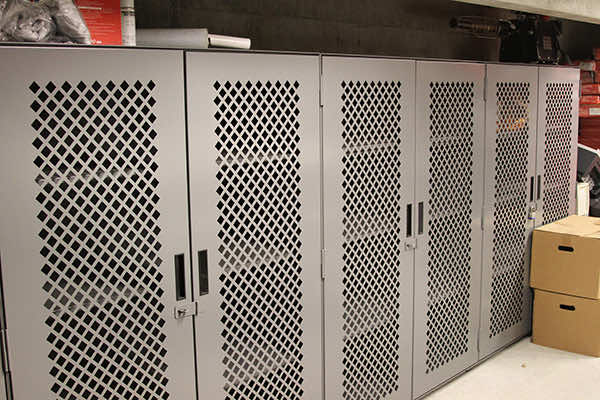
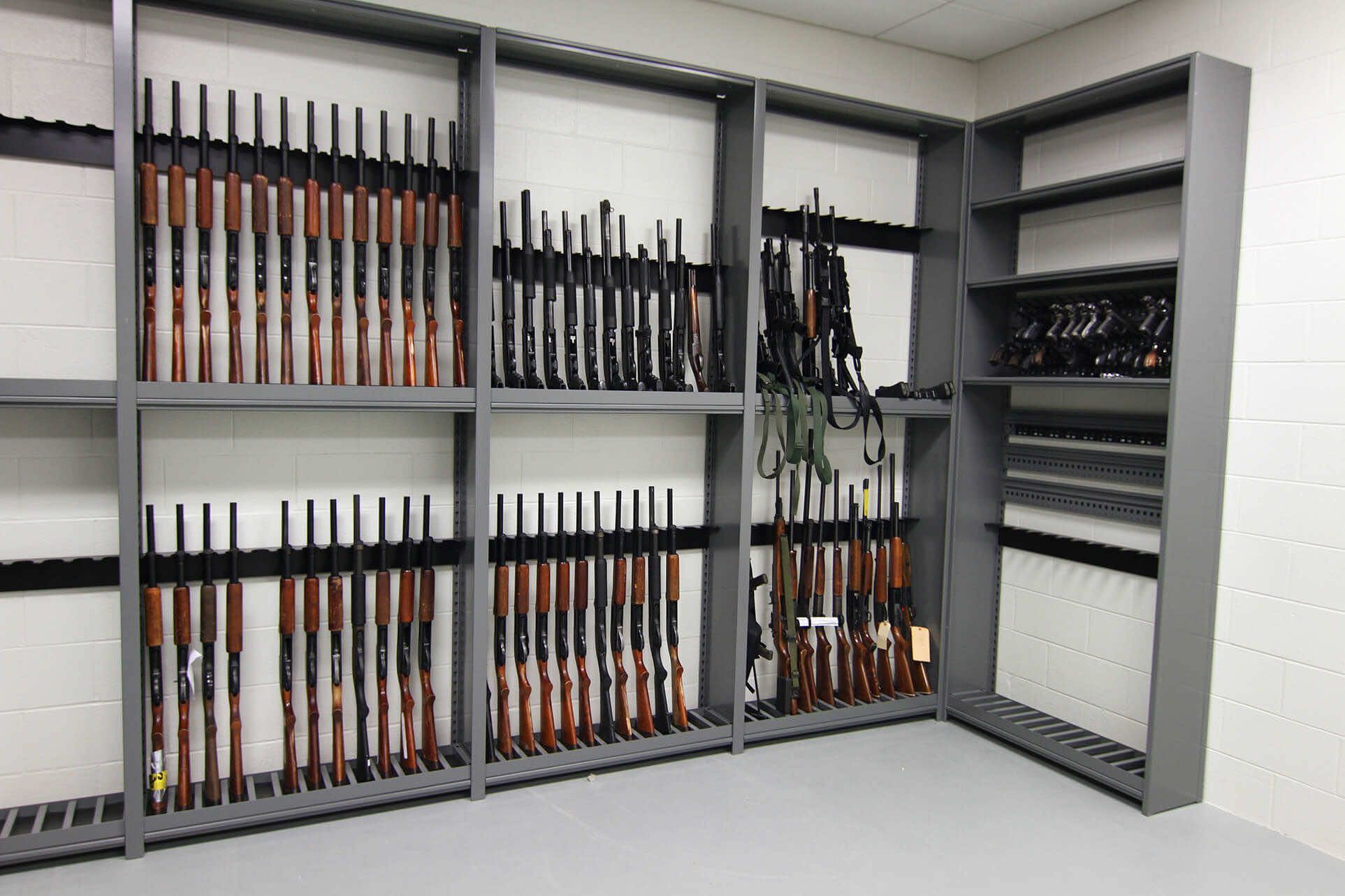
The approximate size of the Durham County Public Safety Building is 320,000 SqFT. The facility houses the Durham County Sheriff’s Office, the District Attorney’s Office, and 20 courtrooms—and was built to LEED® Gold Standards.
Secure Armory Storage
In addition to the evidence storage, another important facet of the new building was secure armory storage. A combination of weapons racks and pistol racks used on four-post shelving created the ideal solution for the department. The depth of turnout gear storage was easily able to support all of the department’s active weapons—and in configuring the racks for two levels of storage, there was also enough room to store the department’s vintage collection of weapons.
The integrated storage solution has allowed Bradford and his staff to spend more time on other things—namely, investigating crimes. “As someone who is part of a small staff here, I double as a Crime Scene Investigator and Evidence Technician,” Bradford says, “So I see first-hand how an organized long-term evidence storage solution benefits the other side of things. It makes our jobs a lot easier—and a lot less time is wasted.”





